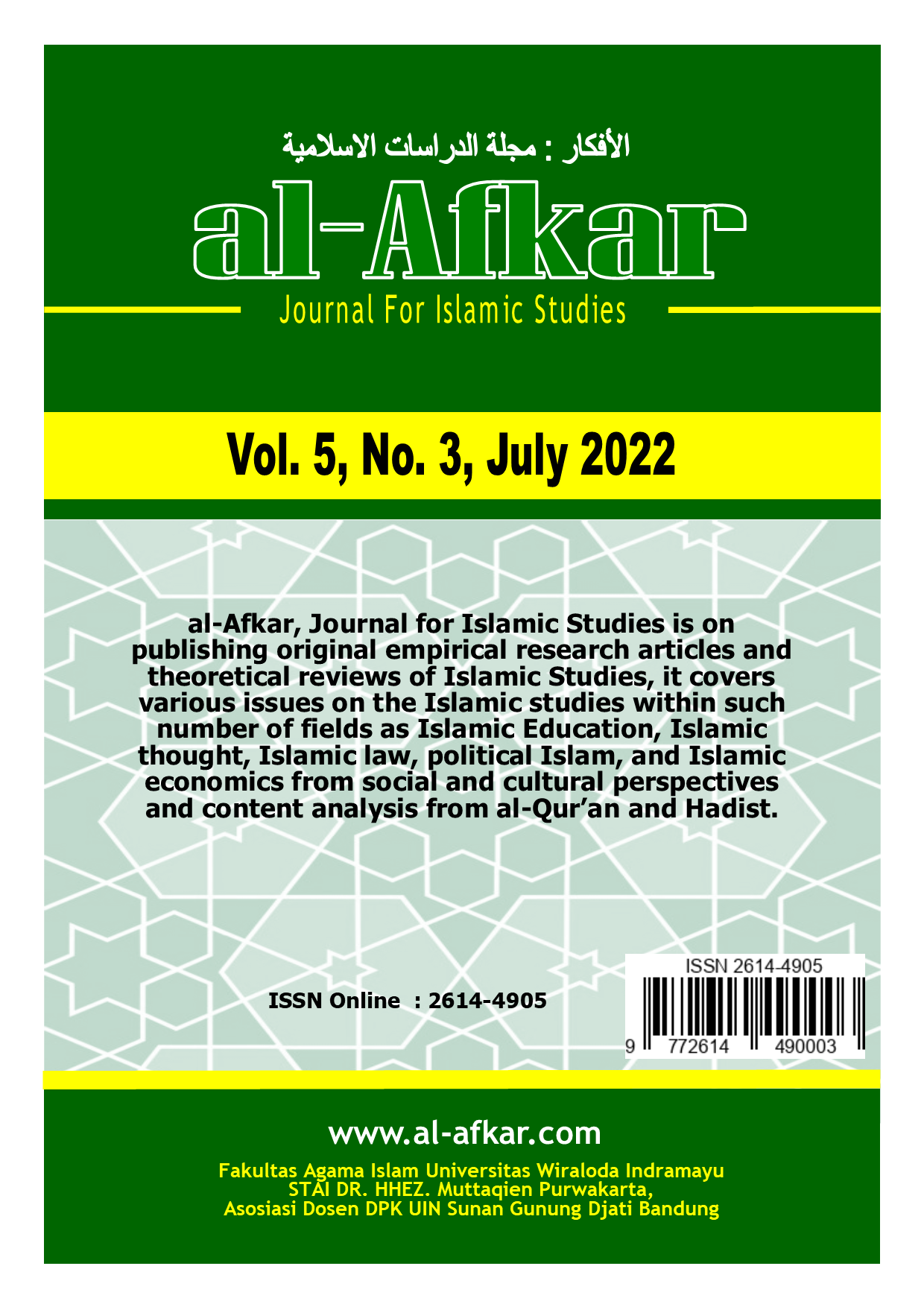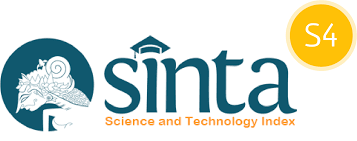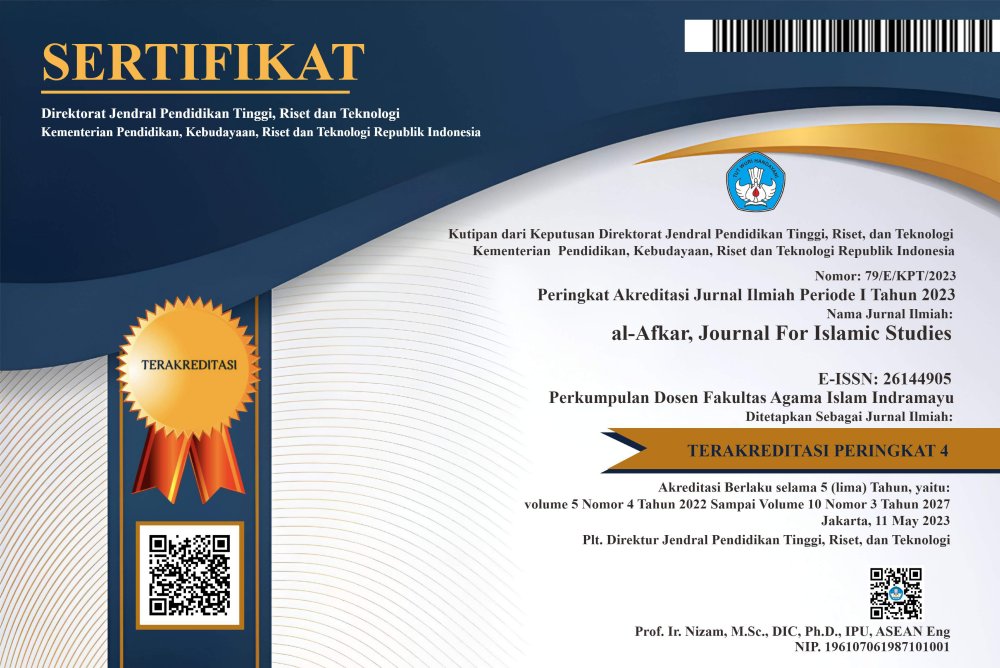ZOROASTRIAN (MAGI) CONDITION UNDER THE AUSPICES OF ISLAM AND ITS SPREAD IN INDIA
DOI:
https://doi.org/10.31943/afkarjournal.v5i3.262Keywords:
Condition, Islam, India, ZoroastrianAbstract
The Zoroastrian religion is known as Zoroastrianism. It is an ancient religion that appeared in Asia. It is the official religion of several ancient empires in Asia, the most important of which is Persia or the Sassanid state. Their number ranges between 145 thousand to 2.6 million people, and Zoroastrianism or Magus is one of the oldest religions in the world, as its emergence dates back to approximately 3,500 years. This religion is considered a religion that believes in Two gods' existence: the God of evil and good and light. The question is: Are the Magi from the People of the Book? By 632 AD Yazdegerd III came to power in Persia, but the Arab/Muslim army had already begun conquering Persia. The Muslims defeated them at Nahavand and killed Yazdegerd by a mill at Merv in 652, putting an end to the Sassanid dynasty and thus to the official history of Zoroastrian Iran. While they lost their religion and writing and some Sassanid historical literature, language and culture essentially survived. Political and social pressures led to Iranian Muslims over Zoroastrians between the seventh and thirteenth centuries. With the conquests, the Iranians gradually lost their dominant religion. Zoroastrians moved to India in successive migrations in the Islamic era. The initial migration that followed the conquest has been described as religious persecution through the conquest of Muslims, some persisted in the religion, and some fled Central Asia and India
Downloads
References
Abi Bakar Ahmad ibn Muhammad Harun, Ahkam Ahl al-Milal Min al-Ja'mi Limasail al-Imam Ahmad ibn Hanbal, Dar Kutub al-Ilmiyah, 2003
Ahmad Ibnu Taimiyah, Bayan talbisi al-jahmiyah fi Ta'sisi Bid'ihing al-Kalamiyah, Daru al Qasim , 2000
Aḥmad ibn Muḥammad Khallāl and ʻAbd Allāh Muṭlaq, Kitāb Al-Tarajjul Min Kitāb al-Jāmiʻ Li-ʻulūm al-Imām Aḥmad Ibn Ḥanbal, al-Ṭabʻah 1, al-Riyāḍ: Maktabat al-Maʻārif lil-Nashr wa-al-Tawzīʻ, 1996
Al Maturidi As Samarqondi, Ta'wilat Ahli Sunah Wal Jama'ah, Tafsir Al Maturidi, (Dar Kutub al-Ilmiah, 2005
Hamidah Hamidah, “Al-Ukhuwah Al-Ijtima’iyah Wa Al-Insaniyah,” Jurnal THEOLOGIA 23, no. 2 (August 24, 2017): 448–66, doi:10.21580/teo.2012.23.2.1678.
Husnul Fatarib, Desmadi Saharuddin, and UIN Jakarta, “The Safavid Dynasty And The Role Of Shah Abbas I In The Development Of Several Field” 15, no. 1,2021
Ibn Qoyyim al-Jauziyah, Ahkam Ahl Dimmah, Dar al-Kutub al-Ilmiah Li al-Nasr Wa al-Tauji', 1995
J. Ovington and H.G. Rawlinson, A Voyage to Surat in the Year 1689, AES Reprint (Asian Educational Services, 1994), 71, https://books.google.co.id/books?id=OVPc5Z6y3LkC.
Meirison, “Islamic Tolerance on Religious Freedom, Culture and Thought in Andalusia,” HIKMATUNA; Vol 6 No 1 (2020): HIKMATUNA: Journal for Integrative Islamic Studies, Juni 2020 DOI - 10.28918/Hikmatuna.V6i1.2313, June 16, 2020, http://e-journal.iainpekalongan.ac.id/index.php/ hikmatuna/article/view/2313.
Meirison and M. Harir Muzakki, “Implementing The Spirit of Jihad in Sufism,” Jurnal THEOLOGIA 31, no. 1 (November 6, 2020): 1, doi:10.21580/teo.2020.31.1.5379.
Meirison Alizar Sali, “Iran Revolution, Economic Struggle And Independence Under The Pressure,” HUNAFA: Jurnal Studia Islamika 16, no. 1 (September 2, 2019): 54–77, doi:10.24239/jsi.v16i1.530.56-79.
M.Ḥ. Juhanī, Al-Mawsūʻah al-Muyassarah Fī al-Adyān Wa-al-Madhāhib Wa-al-Aḥzāb al-Muʻāṣirah, v.1 (Dar Nadwah, 1997), 71, https://books.google.co.id/books?id=PNfrrQEACAAJ.
Mohammad Ali M. Shoja and R. Shane Tubbs, “The History of Anatomy in Persia,” Journal of Anatomy 210, no. 4 (April 2007): 359–78, doi:10.1111/j.1469-7580.2007.00711.x.Muhammad Abu Zahrah, Zahratu al-Tafasir, Dar al-Fikr al-Arabi, 1987
Muhammad ibn Ahmad al-Qurtubi, Mukhtasor Tafsir al-Qurtubi, Dar Kutub al-Ilmiah 2001Muhammad ibn Abd al-Rahman Al-Khomis, Taudih Maqasid al-Mustolahat al-Ilmiyah fi al-Risalah al-Tadmiriyah, 1995
Muhammad ibn Shalih al-Utsaimin, al-syarhu al-Mumtiu ala Zhad al-Mustaqniq, Dammam, Dar Ibn Jauzi, 2002
Muhammad Ridho, Elfi Tajuddin, and Zulvia Trinova, “Jewish Faith, Talmud, And Zionist In Islamic Review,” n.d.
Muhammad Ridho Nur, “Reforming The Islamic Economic And Administration System During The Umayyad Dynasty” 11, 2021.
Muhyiddin ad Darwisyi, I'rabu al-Qur'an al-Karim Wa Bayanuhu, 1980.
Rasyid Al-Hafizh, Fachrul Rozy, and Zaim Rais, “Usul Al-Fiqh: Its Epistemology, Purpose, And Use” 19, 2021.
Said Bin Ali Bin Wahf Al-Qahthai, Syarh Al-Aqidah Al-Wasithiyah Syaikh Al- Islam Ibnu Taimiyah, 1998
Ueli Brunner, “The Great Dam and the Sabean Oasis of Ma’rib,” Irrigation and Drainage Systems 14, no. 3 (2000): 167–82, doi:10.1023/A:1026583213688.
Uwaisan al-Tamimi, Kitab Mausuah al-Mafahim al-Islamiyah al-Ammah, Riyadh, Shamilah, 1996
Wazarah al-Awqaf wa al-Syuun al-Islamiyah, al-Mausuah al-Fiqhiyah, Kuwait 2008.
Yelmi Eri Firdaus, “The Perished Madhhabs And Their Imams In Historical Review” 3, no. 2,2021
Downloads
Published
How to Cite
Issue
Section
License
Copyright (c) 2022 Efendi, Darni Yusna

This work is licensed under a Creative Commons Attribution 4.0 International License.



















